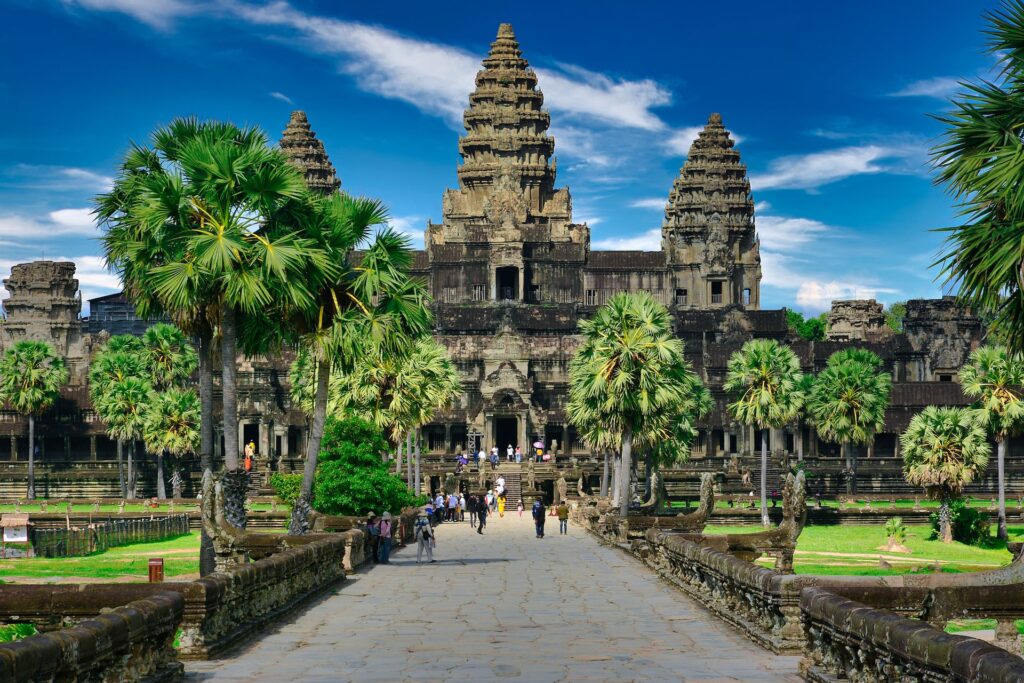Cambodia, a land steeped in rich traditions and customs, offers a tapestry of cultural experiences that are both intriguing and enlightening. As we embark on this journey of “Exploring Cambodian Culture,” we delve into the heart of Cambodia’s unique practices, unraveling the threads of history and modernity that weave together to form the vibrant cultural fabric of this enchanting country.
Chul Mouy: The Cambodian Cheers

In Cambodia, the simple act of toasting transforms into an elaborate ritual. “Chul Mouy,” meaning cheers in Khmer, is not just a word but a celebration of togetherness. Picture this: a bustling street in Phnom Penh, where locals gather around, clinking glasses with every individual at the table before each sip. This tradition, extending beyond mere social drinking, symbolizes unity and camaraderie, a testament to the country’s communal spirit.
Buddhism: The Calm in the Cambodian Heart
Buddhism, more than a religion, is the cornerstone of Cambodian life. It teaches gentleness and patience, values deeply ingrained in the Cambodian psyche. Imagine walking through the serene corridors of Angkor Wat, witnessing monks in saffron robes, their presence a reminder of peace and tranquility amidst the chaos of daily life. This philosophy of avoiding conflict and maintaining harmony is not just a religious tenet but a way of life here.
Dress Code: Respecting Sacred Spaces

Cambodia’s reserved nature is reflected in its dress code, especially at religious sites. When journeying from Sihanoukville to Siem Reap, one notices the stark contrast between the beach attire and the modest clothing required at sacred temples. Wearing clothes that cover knees and elbows is not just about adhering to a dress code; it’s about showing respect for the country’s spiritual heritage.
Shoe Etiquette: A Step Towards Respect
The custom of removing shoes before entering someone’s home or a temple is a sign of respect in Cambodia. This practice, seen from the crowded streets of Phnom Penh to the tranquil temples of Battambang, signifies leaving the outside world behind and stepping into a space of purity and respect.
Head and Feet: The Hierarchy of the Body
In Cambodian culture, the head is revered while the feet are considered the lowest part of the body. It’s crucial to avoid touching someone’s head or pointing your feet at people or sacred objects. This belief, deeply rooted in spiritual and social norms, is a reflection of the country’s hierarchical view of the human body.
Sampeah: The Cambodian Greeting
The sampeah, a gesture of pressing palms together in front of the chest with a slight bow, is the quintessential Cambodian greeting. The height of the hands and the depth of the bow increase with the respect accorded to the other person. This elegant gesture, transcending mere handshakes, is a symbol of grace and respect in social interactions.
Dining Etiquette: A Symphony of Sounds
Cambodian dining customs turn the Western etiquette of quiet eating on its head. Here, the sounds of lip-smacking and slurping are not frowned upon but are signs of enjoying a meal. However, blowing your nose at the table is considered impolite. These dining norms, observed from local eateries in Siem Reap to high-end restaurants in Phnom Penh, add a unique flavor to the culinary experience.
Women and Monks: A Respectful Distance

In Cambodia, interactions between women and monks are governed by strict rules. Women should not touch monks and should hand over offerings respectfully, either placing them on a receiving cloth or within the monk’s reach. This practice, especially important in temple visits, is a reflection of the country’s deep-rooted religious beliefs and social customs.
Conclusion: Embracing the Cambodian Way
Exploring Cambodian culture is not just about witnessing these customs but understanding and respecting them. Whether it’s navigating the bus transportation from Phnom Penh to Siem Reap or taking a private taxi to explore the hidden gems of Battambang, each experience is enriched by these cultural nuances. As travelers, embracing these traditions is a step towards a more authentic and respectful journey through the heart of Cambodia.